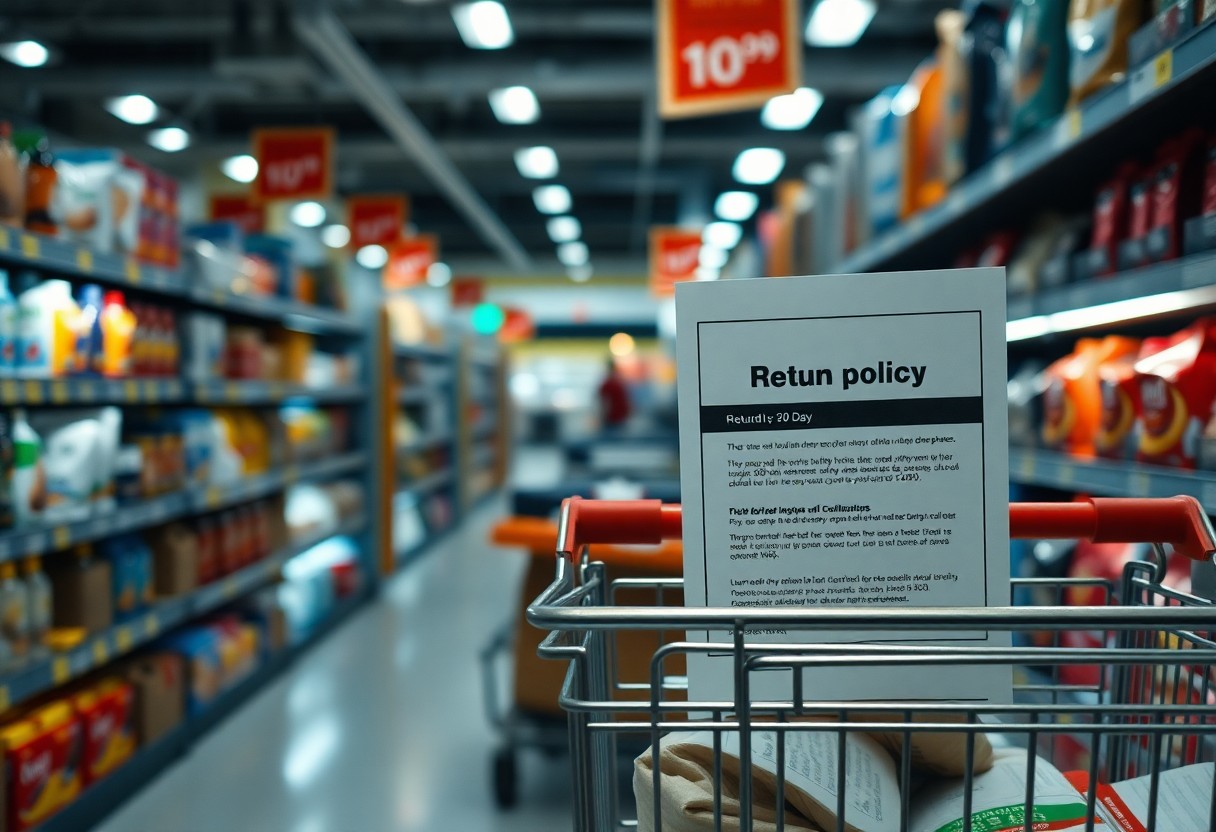With a comprehensive understanding of the Target return policy, you can confidently shop knowing that you have 90 days to return most items for a full refund. This policy applies to un opened items and includes electronics, clothing, and home goods. However, be wary of exceptions such as seasonal items or those purchased with a red card, where specific rules may apply. Make sure to keep your receipt to streamline the process and avoid any unwelcome surprises.
The Psychology Behind a 90-Day Return Policy
Building Customer Trust and Loyalty
Offering a 90-day return policy fosters an environment where you feel secure in your purchasing decisions. This extended time frame allows you to test products and determine their fit and functionality in your life, which can significantly increase your satisfaction. When you are confident that you can return an item hassle-free, you’re more likely to become a repeat customer, building a sense of loyalty towards Target. Studies show that brands that offer flexible return policies often see increased customer retention rates, further solidifying trust in their brand.
Target’s commitment to customer satisfaction is exemplified by its generous return policy. By allowing returns for up to 90 days, you benefit from a level of reassurance that few retailers offer. This policy acts as a safety net, knowing that your investment is protected, enhancing your overall shopping experience and encouraging you to explore a broader range of products without the fear of making a mistake.
Reducing Buyer Remorse
Buyer remorse often stems from the anxiety of making a wrong purchase, leading to second-guessing after the fact. A 90-day return policy directly addresses this issue, providing you with ample time to assess whether the product meets your expectations. This policy alleviates the pressure to rush into a decision, allowing you to take your time, truly evaluate the item, and return it if it falls short of your needs. As a result, you can shop with a clearer mind and increased confidence.
With the potential for a change of heart, a longer return window further encourages exploration of new items or categories that you might otherwise avoid. Knowing you can return an item if it doesn’t meet your needs diminishes the psychological burden of regret, making the shopping experience less stressful and more enjoyable.

Financial Implications of Extended Return Windows
Impact on Sales and Revenue
Offering a 90-day return policy can significantly boost your sales and revenue. Customers are more likely to purchase items when they feel they have the flexibility to return them without hassle. Research indicates that retailers with extended return policies see a 10-30% increase in conversion rates. When customers know they have ample time to evaluate a product, they tend to make larger purchases, reducing hesitancy and potential cart abandonment. This leads to a more favorable shopping experience, encouraging customer loyalty and repeat business.
Additionally, the psychology of a generous return window can enhance your brand image. You position your business as customer-centric, which resonates well in today’s market where consumers prefer brands that prioritize their satisfaction. Increased confidence in the purchase decision is not just about the return; it’s about the overall relationship you foster with your customers, who are likely to spread positive word-of-mouth and drive new traffic to your store.
Cost-Benefit Analysis of Returns
While extended return windows can elevate your sales, they also introduce specific costs. Handling returns involves operational expenses such as restocking, inspecting, and potentially refurbishing products. According to recent studies, the average return rate for online purchases hovers around 20-30%, which can lead to significant losses if not managed effectively. Weighing these costs against the increase in sales can provide insights into whether an extended policy is beneficial for your business in the long run.
The cost-benefit analysis extends beyond just immediate financial impacts. An extended return policy can reduce the number of negative experiences customers might have when dealing with complications around returns. By establishing a clear and customer-friendly returns process, you minimize the risks of dissatisfaction and potential negative reviews. This approach not only helps you maintain a positive reputation but also has implications for future sales growth and customer retention.
Specifically, analyzing your return logistics is necessary. After evaluating operational costs and customer interactions, your decision could hinge on metrics such as customer acquisition costs and lifetime value. A streamlined returns process might incur upfront expenses, but the long-term benefits of enhanced customer trust and loyalty can lead to increased revenue that offsets these initial investments.

Navigating the Fine Print: What Customers Need to Know
Conditions and Exceptions of the Policy
The 90-day return window generally applies to most items purchased at Target, but certain conditions must be met for your return to be accepted. For instance, electronics and entertainment items must be returned within 30 days, while special items like seasonal merchandise have their own designated return policies. Items that are opened and used, such as cosmetics or food products, cannot be returned unless defective. Always check the item’s receipt or online order details for specific return guidelines before proceeding.
Additionally, bulk purchases may have different return requirements. If you buy in larger quantities or purchase items through specific promotions, you may find yourself under more stringent rules. Documentation can also play a vital role; having your original receipt facilitates a smoother return process, while without it, you might only receive a store credit or face more challenges with the return.
Steps for Successful Returns
Initiating a return at Target requires a straightforward approach. First, collect all respective receipts and original packaging if available. This not only expedites the process but also helps avoid any confusion regarding the condition of the item being returned. Head to your nearest Target location or opt for the online return process if that is more convenient.
Next, at the physical store, seek assistance from a team member. Specify the reason for your return, and they can guide you through the rest of the process efficiently. For online returns, access your order details on the Target website or app to generate a return label. Following the prompts correctly ensures your return is processed within the specified time frame, and you’ll receive your refund or exchange without unnecessary delays.
Double-check the return policy guidelines on the items purchased before initiating the return. Knowing whether your items fall under exceptions or have specific return windows helps prevent frustration and streamlines the process. By adhering to these steps and collecting necessary documentation ahead of time, your return experience at Target will be seamless and hassle-free.
Real-World Examples: Brands That Excel with 90-Day Policies
Case Studies of Success
Companies that implement a 90-day return policy often see significant positive impacts on their bottom line. For instance, a leading outdoor apparel brand reported a 30% increase in online sales after adopting a more generous return policy. This change encouraged customers to make purchases with confidence, reducing cart abandonment rates by 25%. Another tech company revealed that extending their return window improved customer satisfaction ratings, with a 50% lower rate of return fraud.
- Outdoor Apparel Brand: 30% increase in online sales; 25% reduction in cart abandonment.
- Tech Company: 50% reduction in return fraud; 30% improvement in customer satisfaction scores.
- Home Goods Retailer: Increased repeat purchases by 40% after policy implementation.
- Furniture Store: 100% increase in foot traffic leading to purchases during the return period.
Lessons Learned from Failures
Not all brands thrive under a 90-day return policy, especially when the terms are mismanaged. One notable electronics retailer faced backlash after failing to clarify return conditions, leading to a sharp decline in consumer trust. In their case, a lack of clear communication resulted in a 15% drop in repeat customers within six months. Another fashion label struggled with inventory management, experiencing a 20% increase in returned items that couldn’t be resold. These missteps highlight that clear communication and solid operational logistics are vital to ensure a 90-day policy benefits your business.
The Future of Retail: Trends Induced by Generous Return Policies
Shifts in Consumer Behavior
Consumer expectations have evolved as return policies become more lenient. A 90-day return policy allows you to shop with confidence, knowing that if the product doesn’t meet your expectations, you have ample time to return it. This shift is evidenced by surveys indicating that over 60% of customers consider a generous return policy as a key factor influencing their purchasing decisions. As a result, you may find yourself increasingly willing to try new brands and items, enhancing the overall shopping experience.
Moreover, the opportunity to return products easily fosters a sense of trust; you may choose to shop from retailers who outline straightforward return processes. This growing sentiment has led retailers to invest in user-friendly return systems, ensuring that even returns are seamless. Consequently, your loyalty to brands with favorable policies is likely to strengthen, creating a more dynamic relationship between consumers and retailers.
The Competitive Edge in E-Commerce
In an overcrowded e-commerce landscape, a 90-day return policy can set you apart from competitors. While many online retailers still offer the customary 30-day returns, an extended return period serves as an attractive differentiator for you when choosing where to shop. Brands that embrace this approach see up to a 25% increase in conversion rates, as customers feel a greater security knowing they can return products without the risk of being rushed.
Building trust plays a pivotal role in your purchasing decisions. Retailers offering generous return policies often experience a higher customer return rate, leading to greater brand loyalty and repeat business. By prioritizing your comfort and satisfaction, businesses not only enhance your shopping experience but also position themselves favorably against those that uphold stricter return guidelines.
Final Words
Hence, understanding the target return policy of 90 days empowers you to make informed purchasing decisions. You have a generous window that allows you to evaluate your items for quality and satisfaction before committing to a final decision. This policy ensures that you can confidently shop, knowing that should your purchase not meet your expectations, you can return it within the specified timeframe.
Additionally, being aware of the guidelines surrounding returns further enhances your shopping experience. You should keep your receipts and ensure that items are in original condition to avoid any complications during the return process. By adhering to these parameters, you can take full advantage of the return policy, making your shopping experience both efficient and stress-free.
FAQ
Q: What is the target return policy for items purchased within 90 days?
A: Items purchased at Target can be returned within 90 days of the original purchase date. The items must be in new or gently used condition and have the original packaging, if applicable.
Q: Are there any exceptions to the 90-day return policy?
A: Yes, certain items have different return policies. For example, electronics must be returned within 30 days, and final sale items cannot be returned. It’s important to check the specific return policy for each category of product.
Q: How can I process a return within the 90-day timeframe?
A: To process a return, bring the item along with your receipt or proof of purchase to a Target store. You can also initiate a return online through your Target account if the item was purchased online.